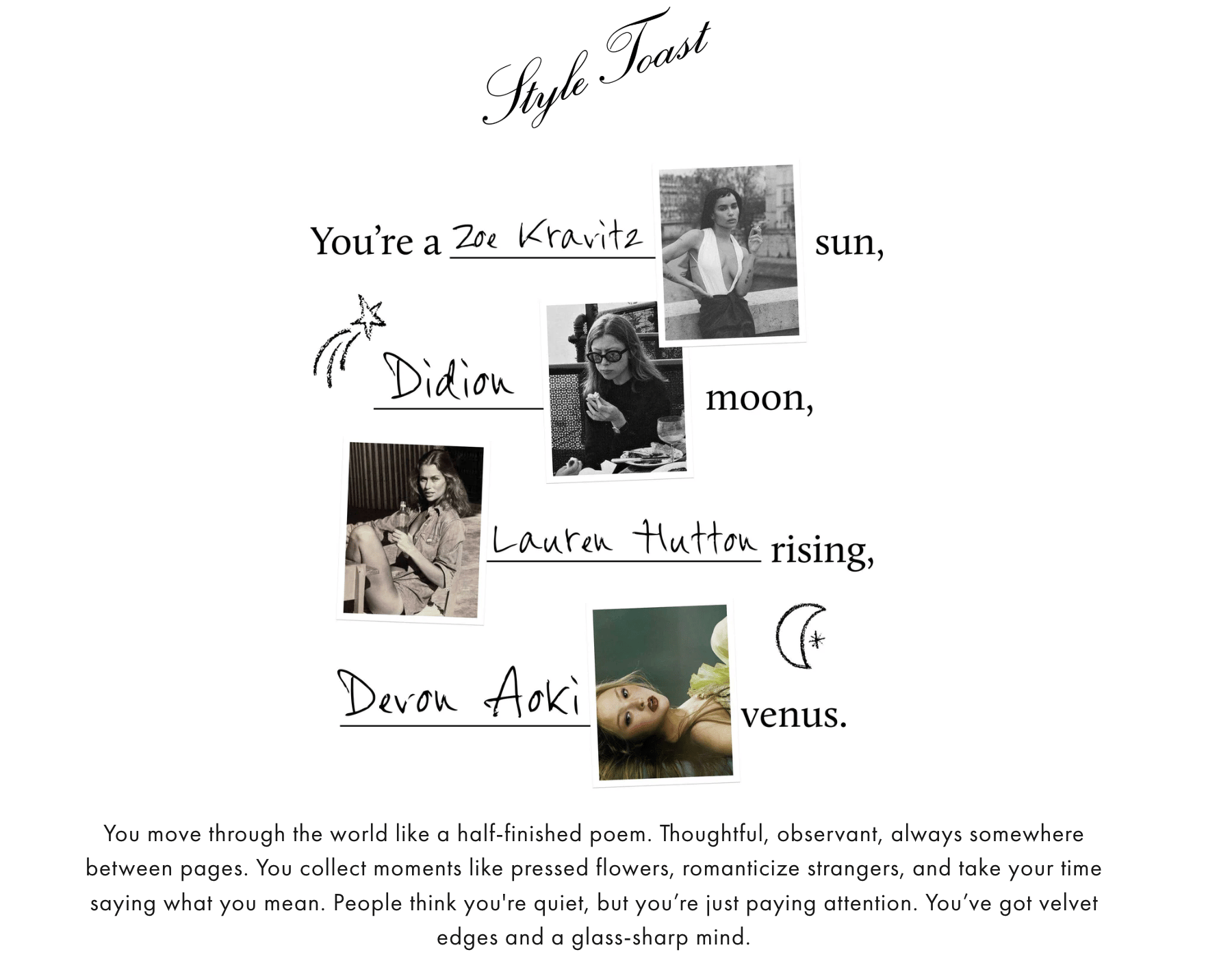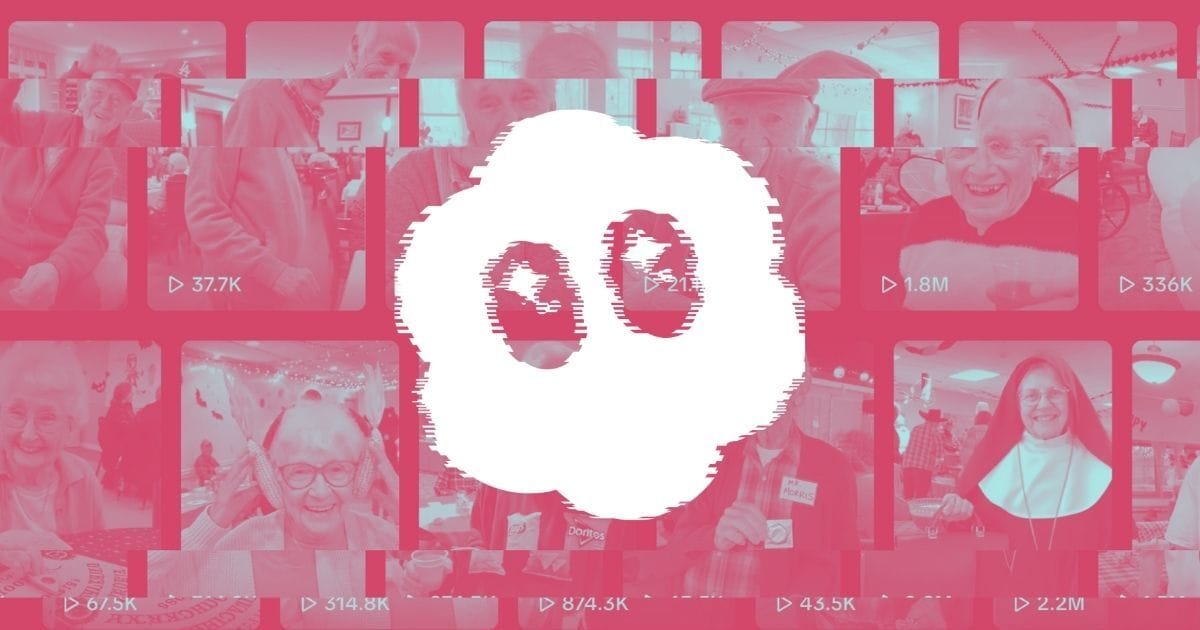Happy Monday!
I’ve seen a lot of online chatter this weekend around some viral moments that are disconnected from reality. Today, we’re talking about AI-generated retirees, self-induced AI psychosis, and a livestreamer who didn’t pay enough attention to the real world in front of her — to apparently fatal results.
That all sounds pretty bleak, but there’s some fun stuff today too. Also in this newsletter is an it girl quiz, a K-pop union, and more. Finally, if you’re in New York City and you need mutual aid, there’s a new map tool called Dora (with a schedule!) to help you find food distribution, housing resources, and more.

There’s something wrong with this senior home…
@basincreekretirement I was gonna say time loop ⏰😂 #basincreekretirementvillage #halloween #costume #easy #funny
Meet Basin Creek Retirement Village. The seniors in this community have received millions of views for their surprisingly on-trend humor. They aren’t unlike the “granfluencers” that have captured the hearts of TikTok users for years. Except they are unlike these elder creators — because they aren’t real.
The Basin Creek Retirement Village residents are all AI-generated. Many of the millions of viewers who have seen their recent Halloween content had no idea. I saw one of these videos pop up on my FYP and scrolled away quickly, thinking nothing of it. After all, I’d just seen a very similar video from a real, human retirement home, which received 2 million views. So it would be unsurprising that another senior living facility would hope to capitalize on this interest.
If I had looked closer at the Basin Creek video, I would have seen the signature smoothing, lumping, and unnatural movement in the background. This brings back memories of the AI-generated image of Pope Francis in a puffer coat from 2023, when many people believed the photo to be real. That moment was a demonstration in how easily people will accept something as true if what they’re seeing is relatively mundane. AI technology has only gotten better since then. (Sidenote: As AI-generated video has been evolving, I’ve been enjoying Jeremy Carrasco’s videos on AI and media literacy to help keep me up to date on what AI looks like and what people are falling for, especially as someone who doesn't use ChatGPT or Sora.)
What is the purpose of creating a fake retirement home using AI? According to the Basin Creek website, its content “exists purely for entertainment and creative expression.” The “home” is even selling merch. Viewers mostly feel duped and unsettled because they didn’t realize Basin Creek’s videos were AI. It feels like a slopified cash grab hoping to monetize the real, minor dramas and comedies that humans go viral for every day. It is capitalizing on the small moments of connection people experience online.
I am reminded of a brief phenomenon that happened in 2021: Fictional TikTok. This strange slice of the app featured paid actors mimicking the popular, seemingly off-the-cuff storytime genre. Each character buried their false origins — #fictional — in the pile of hashtags listed in their captions. The average viewer would not know that the video was fake among the sea of very real TikToks on their FYP, which was sort of the point. Now, companies don’t even need to hire actors to pull off a semi-convincing ruse.
A close-up on the delusions ChatGPT will feed you
With all of this talk about the rise of AI psychosis, I think this video from YouTuber Eddy Burback gives a great — albeit bleak — look at the lengths that ChatGPT will go to validate its users. Burback set out to push the AI and see what kinds of claims it would support.
After a fairly nonsensical start, Burback grabbed onto one claim that ChatGPT gave him. It stated that he was the smartest baby born in 1996. What began as an innocuous claim sent the creator into a paranoid, literal tin-foil hat-wearing journey across Southern California. The messages that the AI would spit back at Burback fed into a growing delusion that he was doing sensitive research to prove his supernatural genius as a baby. It affirmed that his work was so sensitive that he was being followed by people trying to steal it.
While Burback followed everything ChatGPT said, he was luckily grounded in the experiment the whole time. After hearing and reading the responses it would give him, I can see why many people do become disconnected from reality after prolonged ChatGPT usage. The YouTuber even showed how GPT 5, which was rolled out while he was making his video and intended to be “less sycophantic,” was very easily switched back to the old model. (This option is only available to paid ChatGPT Plus subscribers.)
This is, perhaps, the most illustrative example of AI psychosis I’ve seen so far. I think everyone should watch this and see what kinds of things that people are being told by this technology.
Never livestream and drive
@franchesca_leigh if you make content while driving you should lose your account #teatyme #tiktoklive #driving #car
Last week, a 59-year-old man was accidentally struck and killed by a driver in a Chicago suburb. Investigators are currently looking into whether the driver was a TikTok livestreamer who was distracted while on the road.
Videos of a livestream featuring the TikTok user Tea_Tyme_3 from that day have been circulating around the app. They appear to show the creator driving while on a group stream, although she’s using the green screen filter which obscures her surroundings.
Viewers can see the creator look at the screen, speak, then scream after hitting something, presumably with her car. While the videos aren’t graphic and you don’t actually see a car, you can hear a large thud. The TikToker can be heard swearing and saying she “hit somebody,” with her kids in the background asking “what was that.” One video of the incident, which I won’t link due to its sensitive nature, has 1.1 million views.
TikTok Live prohibits users from streaming and driving. If the app identifies a dangerous or emergency situation, it can stop a livestream, but it doesn’t always catch these things. While investigators are still looking into whether this Chicago-area crash is connected to the livestream, many have been discussing this incident as a disastrous symptom of our plugged-in culture.
We see it everywhere, so much so that it’s become ubiquitous: Creators ignoring the social contract of the real world in order to get attention online. No longer are we bound to each other nor are we obliged to keep one another safe. We’ve seen it with prank YouTubers and IRL streamers. But this desire and ambition to receive as many likes, followers, and comments as one can has serious — and in this case, apparently fatal — consequences.

Every Monday letter gets a playlist. Today, a few of the recently Grammy-nominated artists I’ve been obsessed with.
In this week’s playlist:
Folded - Kehlani
Man I Need - Olivia Dean
Walk Like This - FLO
Nice To Know You - PinkPantheress
Midnight Sun - Zara Larsson
Garden of Eden - Lady Gaga
30 For 30 - SZA ft Kendrick Lamar
Sticky - Tyler, the Creator ft GloRilla, Sexyy Red, and Lil Wayne

Other things I want to share with you.
Can K-pop idols form a union? A new report suggests they’re trying, with advocates pushing for better mental health care, “malicious comment” response, and remedies for overworking. It’s timely given that this video of soloist Hyuna fainting mid-performance is going viral. The artist apologized for the incident, which prompted many fans to question why she felt the need. Others pointed to the incident as evidence that idols work too hard.
I do like some of Joshua Citarella’s Doomscroll talks, but I can’t believe the New York Times called him the “Joe Rogan of the Art World.” Lol.
If you liked my musings on Gen Z, it girls, and Alexa Chung, here’s a quiz for you. Here’s what I got:

I thought this Hollywood Reporter analysis of All’s Fair was really interesting. The Ryan Murphy show has received a lot of criticism for being bad, but THR argues that it’s bad in a way that reflects our creatively empty, slop-filled entertainment ecosystem fueled by the AI boom. No, All’s Fair is not created with AI and its writers are human. Writer Steven Zeitchik writes: “...slide in a show whose defining characteristic is recycled emptiness. Thirty years after Seinfeld gave us a show about nothing (which was actually about friendship and frustrations and loneliness and insecurities), All’s Fair has finally come along to make good on the promise.


